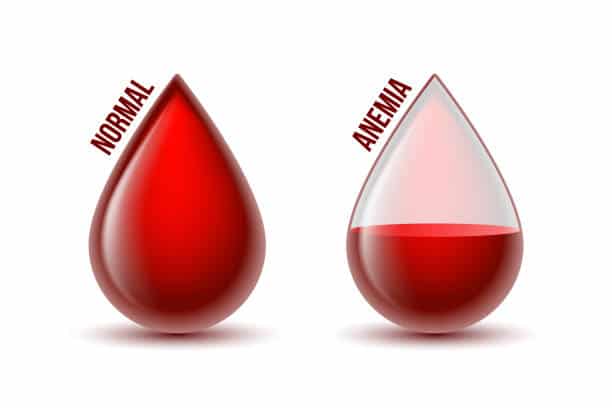
Some signs of an iron deficiency are easy to recognize. Those include chronic fatigue and pale skin. However, there are a few signs of low iron levels that might surprise you. When you know how to recognize them, it makes it easier for you to address the problem quickly.
RELATED: Signs You May Be Iron Deficient
1. You Get Frequent Infections
Studies show that iron is important for a healthy immune system because of its role in helping red blood cells carry out their functions. Those include carrying oxygen to the spleen and lymph nodes. Both of those organs are essential to a fully functional immune system.
Poor iron levels can also affect the health of the white blood cells that fight infections. The end result is that you’re more susceptible to infections.
2. Your Tongue Swells
Another reported issue for people who have low iron levels is that their tongues start to change. Sometimes, the tongue gets smoother or its color changes.
At other times, there are signs of inflammation that can get bad enough to affect chewing and swallowing. You may also experience swollen or cracked lips as well as mouth ulcers.
RELATED: Five Iron-Rich Foods to Give Anemia Eviction Notice
3. You Developed Restless Leg Syndrome
Though doctors aren’t sure about the root cause of this one, people with low iron levels have experienced restless leg syndrome. This syndrome includes an unpleasant crawling sensation in the legs and an uncontrollable urge to move them. Since it’s most likely to happen at night, you might have a lot of trouble sleeping - which can be a difficult issue to manage if you’re already dealing with chronic fatigue.
4. You Can’t Concentrate
As with your immune system, iron is important to the proper function of your brain and nervous system. If you’re not getting enough iron, you might notice that you have trouble concentrating.
5. Your Nails Keep Breaking
In severe cases of iron deficiency, your nails can become brittle. If the iron levels don’t improve, your nails can develop a dip in the middle while the ends are flared. This gives the nail a spoon-shaped appearance and is usually an indication that you’re in the advanced stages of iron deficiency.
6. You’re Having More Depressive Episodes
Part of iron’s role in maintaining a healthy brain and nervous system is in the manufacture of dopamine. Dopamine is a well-known ‘feel-good’ chemical that also helps nerve cells send messages to each other. Changes in your dopamine level can affect how good you feel and lead to more episodes of depression.

RELATED: 7 Ways to Combat Anemia Symptoms This Fall
What To Do About It
In most cases, changing your diet can make a world of difference in improving your iron levels. Some of the foods you can look out for include shellfish, legumes, liver, spinach, broccoli, and red meat. It may also be helpful to eat cereal and other foods that are fortified with iron. According to nutritionists, you can maximize your iron intake by pairing certain foods well. For example, Vitamin C helps you absorb iron so adding tomatoes to a spinach salad is a good idea.
If it’s not easy to make changes to your diet or you have dietary restrictions, a supplement might be a good option. Of course, these measures might not be enough if there’s an underlying condition you need to address. While eating well, you should check in with your doctor. Some illnesses like kidney disease and chronic inflammatory disorders can cause anemia. People who have heavy periods should also take note of their iron levels.
Low iron levels can be caused by a variety of issues but the signs aren't always obvious. If you’re seeing any of the symptoms listed here, it’s time to talk to your doctor about the way forward. Sometimes, you only need to be pickier about what you eat but there might also be an illness that needs to be treated or managed more effectively.








